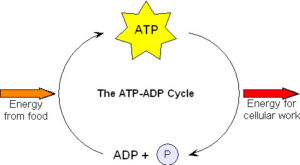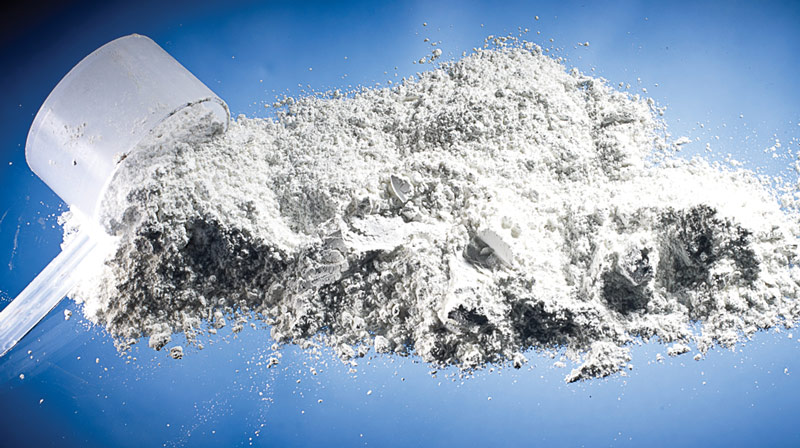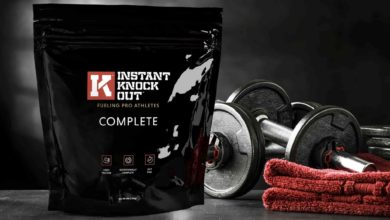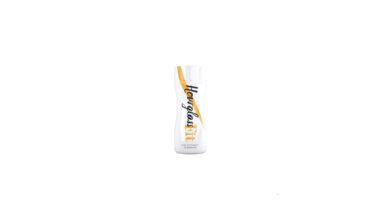
Creatine is one of the most popular supplements on the entire market. It’s all for good reason too, bro! If you’re a responder to Cr scooping a serving into your daily supplement routine is proven to improve athleticism, build powerful muscle, and even improve focus. Here’s everything you need to know about the initial creatine loading phase…
Article Brodown:
- Introduction to Creatine
- What Does Creatine Do?
- Types of Creatine Supplements
- Benefits of Creatine Supplements
- What is the Loading Phase?
- Do you need a Loading Phase for Creatine?
- How much Creatine should you take during a Loading Phase?
- Pros & Cons, and the Myths surrounding Creatine
- Conclusion – Final word on Creatine Loading
 Introduction to Creatine
Introduction to Creatine
Creatine is a natural compound used by your body to help produce adenosine triphosphate (ATP), the primary fuel source your muscles. As an amino acid you get most of it from your diet – specifically by consuming creatine-rich foods like meat, fish, and eggs.
Once inside the body, creatine is stored in your muscles ready for action. Whenever you perform high-intensity exercise like sprinting, lifting, or other explosive movements, your body uses creatine to get those muscle fibers firing and regenerate energy.
But the benefits don’t just end there, bro. Many gym-obsessed guys supplement with creatine to enhance their muscle gains – which can be accelerated by undergoing a loading phase.
The only issue is, you don’t actually store that much creatine in your body. All it takes is a few short bursts of all-out effort and the tank runs dry – meaning we have to wait minutes for it to resynthesize.
By supplementing your diet with additional creatine, you can optimize the amount stored in your body. Your muscles hold the extra dosage ready for when it needs to go hard – giving them the energy to crush killer workouts with ease.
What Does Creatine Do?
Creatine is stored inside skeletal muscle tissue as creatine-phosphate (CP). Your body needs it to perform intense bursts of exercise, as CP re-phosphorylates adenosine di-phosphate (ADT) into adenosine tri-phosphate (ATP).
Whenever you look to explode into a box-jump or drag a ground-shaking deadlift your muscles need energy. They find it by breaking down ATP, leaving behind ADP as a by-product. Unfortunately, ADP cannot be used for energy.
To solve this, the CP backup supply stored in your muscles is then used to transform (re-phosphorylate) ADP back into ATP. Once resynthesized, the new bank of ATP becomes a useable energy supply once again.

The harder you exercise, the more it will impact the speed you drain your creatine-phosphate tank. Just like firing a shotgun, you have to keep reloading the chamber.
Supplementing with creatine (Cr) is a surefire way to keep your muscle magazine topped up with creatine. This ensures ATP can be resynthesized much quicker, letting you to go beast-mode for longer in the gym.
 Types of Creatine Supplements
Types of Creatine Supplements
There are numerous types of creatine supplements available on the market. Each one has its own pros and cons – however, most guys and researchers go for good ol’ monohydrate. Here are three of the most popular choices:
Creatine monohydrate
- Most popular
- Affordable
- Original style of creatine supplement
- Used by almost all studies due to cost and high purity
- Some people shown not to respond to CM
Ethyl ester
- Less popular
- Less affordable
- Easily absorbed
- More people shown to respond to CEE
- Harsh taste
Micronized creatine
- Less popular
- Less affordable
- Smaller particles
- Better bioavailability
[infobox]
Bro tip: Creatine supplements can also come in a convent tablet form.
[/infobox]
 Benefits of Creatine Supplements
Benefits of Creatine Supplements
Adding a creatine supplement to your stack can help you produce more ATP – enabling you to hit high-intensities for longer. If you’re an athlete, this might be the competitive edge you’re looking for.
But the benefits don’t just end on the track, mat or field. Extensive studies have shown Cr supplementation to be super effective for boosting strength and muscle mass gains too. Bodybuilders and physique developers take note.
There’s also research suggesting that creatine can be used to enhance cognitive processing [1]. It’s for this reason that more forward-thinking brands are starting to use Cr in pre-workout supplements to improve focus.
Scientifically Proven Results
What sets creatine out from most supplements is the amount of rigorous testing it’s undergone. There’s no supplement that’s been under the microscope quite as much as Cr – meaning it’s one of the only few options proven to actually work.
According to one study;
“A recent meta-analysis concluded that creatine supplementation results in an increase in strength of nearly 1.5% per week with enhanced muscle mass of 0.36% per week.” [2]
Here are many of scientifically proven benefits of Cr supplementation:
- VO2 increasements over 10%
- ‘Critical velocity’ and running capacity up to 23%
- Heightened overall training volume of 12%
- Improved lean mass by 1.4 kg
- Reduction in body fat by 3%
- Increased overall strength
- Reduced myostatin levels
- Enhanced cognitive ability – mental sharpness
Key point: Long story short – if you’re one of the 70% responders, creatine can get you jacked.
[/infobox]
 What is the Loading Phase?
What is the Loading Phase?
In order for creatine to take effect, it must first enter the body. One of the more preferred ways to do this is to enter a loading phase.
During this five-to-seven-day period, Cr is rapidly introduced to the muscles in increased dosages. Most manufacturers suggest four-to-five servings of five grams per day, separated by a space of around three hours.
One of the main reasons to opt for a loading phase is to reap the rewards right away. As muscle stores increase from a baseline 125mmol.kg to 160.mmol (max); peak power is boosted, recovery time after max efforts shorten, and ATP resynthesizes faster.
Then there’s the added advantage of instant increases in muscle size. This is mostly due to fluid retention, which makes the user look larger in only a matter of days.
Research has even suggested that when combined with resistance training over a longer period these ‘instant increases’ can be turned into genuine muscle gains. So, if your main goal is to look and feel bigger – creatine loading could be your answer.
Do You Need a Loading Phase for Creatine?
In short – no. By taking a single dose of five grams daily for 21-28 days you can fill your muscles with the same amount of creatine as at the end of a loading phase. Therefore, any type of Cr loading is not essential.
But, and it’s a big but, you might not get the same amount of benefits as loading. If you’re expecting immediate results, you won’t get them with a slower small-dose approach.
Bro, we’ve got to level with you. Not everybody out there is ready to handle a loading phase.
Some people say that high-doses of Cr make them feel bloated. Others even say standard five-gram doses causes gastronomical pain – so tread lightly with the scoop if it’s your first time.
How Much Creatine Should You Take During a Loading Phase?
The ISSN an optimal loading protocol is 0.3 g./kg/day of Creatine Monohydrate for five to seven days [3]. According to their research following this plan can increase Cr stores inside the muscles by 10-40%, with non-meat eaters being the most receptive.
However, further research also suggests that the loading phase can be shortened to just two to three days. All users have to do is coincide their creatine ingestion with carbohydrates and/or protein to speed up the process. [4]
Most manufacturers won’t offer these guidelines though. Instead, it’s pretty standard procedure to prescribe five-gram doses spread out throughout the day until 20 g is achieved.
There’s no current evidence saying exactly when you should take creatine – but many choose to use it before and after exercise.
So, if you’re looking to speed up your supplement intake, coincide your Cr with carbs or protein.
[infobox]Bro tip: A convenient method to is to throw a scoop of creatine monohydrate into your post-training recovery drink.
[/infobox]
 Pros, Cons, and the Myths Surrounding Creatine
Pros, Cons, and the Myths Surrounding Creatine
Here’s the good, the bad, and the downright bullsh*t of all thing’s creatine…
Pros:
- Scientifically proven to work
- Enhances athletic performance
- Increases strength
- Provides muscle gains
- Adds instant size
- Can improve cognitive function
Cons:
- Non-CM versions can be expensive
- Not everybody is a responder
- Can cause gastronomical stress
- Water retention inside the muscles
- Users sometimes report bloating
- Cheaper brands aren’t always quality controlled
- In rare cases Cr supplementation may damage kidneys and liver
Myths:
- Creatine supplementation will make you fail a drugs test – At the time of writing Cr is not a banned substance under any sport
- You must cycle Cr to give your kidneys a rest – Recent studies argue the fact that there is no need to cycle creatine and suggest that ongoing supplementation is not detrimental for healthy people
- Taking more than 20g while loading will make it work better – Studies have shown that the upper tolerable limit of daily creatine absorption in the average person is 20g. Therefore, anything above that will most likely be passed out via expensive urine
 Conclusion – Final Word on Creatine Loading
Conclusion – Final Word on Creatine Loading
Creatine is a rigorously tested supplement that is scientifically proven to work. If you’re fortunate to be a responder, you can reap many rewards by adding it to your stack.
A common method of starting to supplement with creatine is to undergo a loading phase. During this period users take high doses of Cr to flood their muscles in the shortest time possible.
Loading creatine is not essential – yet doing so can come with certain bonuses. Studies have shown that loading can almost instantly increase muscle size due to water retention, while improving strength in under one week.
When loading creatine, it’s important to always follow manufacturer instructions. Good luck with the gains, bro.
References
- 1. Rawson E, Venezia A. Use of creatine in the elderly and evidence for effects on cognitive function in young and old. Amino Acids. 2011
- 2. Devries M, et al. Creatine Supplementation during Resistance Training in Older Adults—A Meta-analysis. Medicine & Science in Sports & Exercise. 2014
- Buford TW, et al. International Society of Sports Nutrition position stand: creatine supplementation and exercise. J Int Soc Sports Nutr. 2007
- 3. Green A, et al. Carbohydrate ingestion augments skeletal muscle creatine accumulation during creatine supplementation in humans. American Journal of Physiology-Endocrinology and Metabolism. 1996
More muscle obsessed reading reps for bros:







Nice explanation bro, thanks… Keep it up
Thank you, Pankaj.